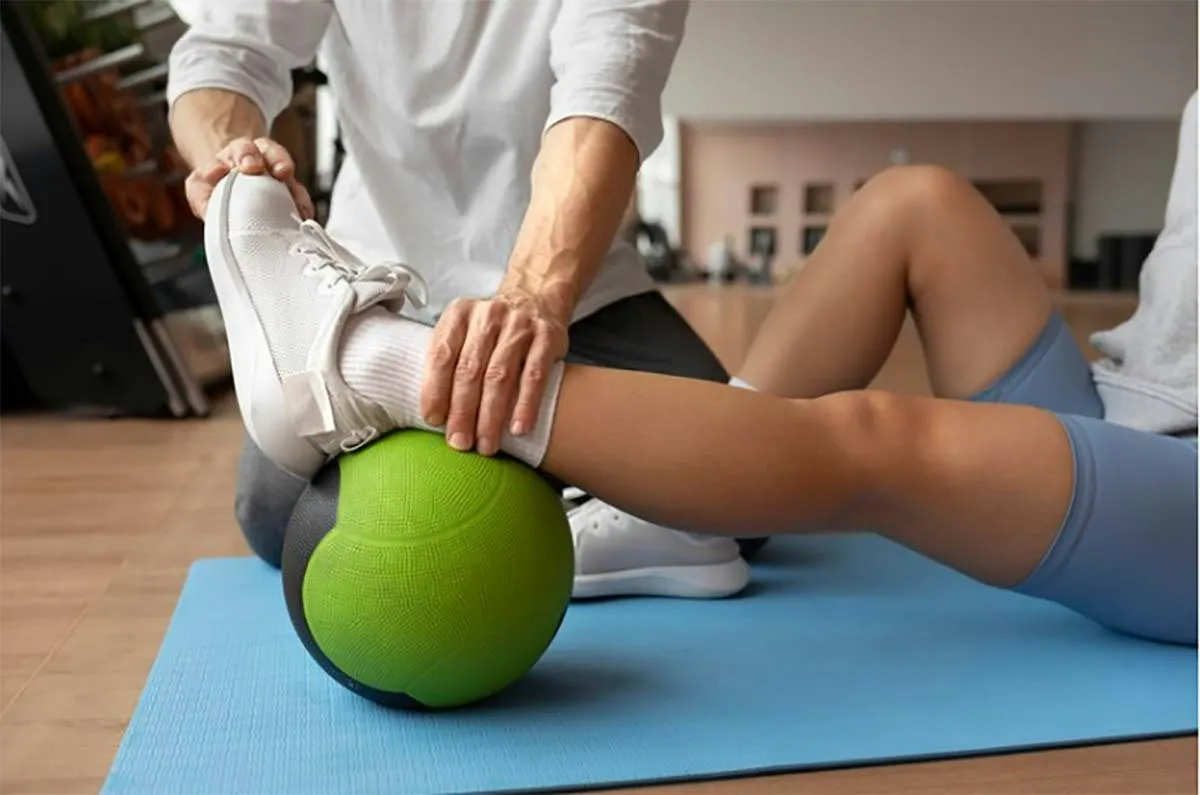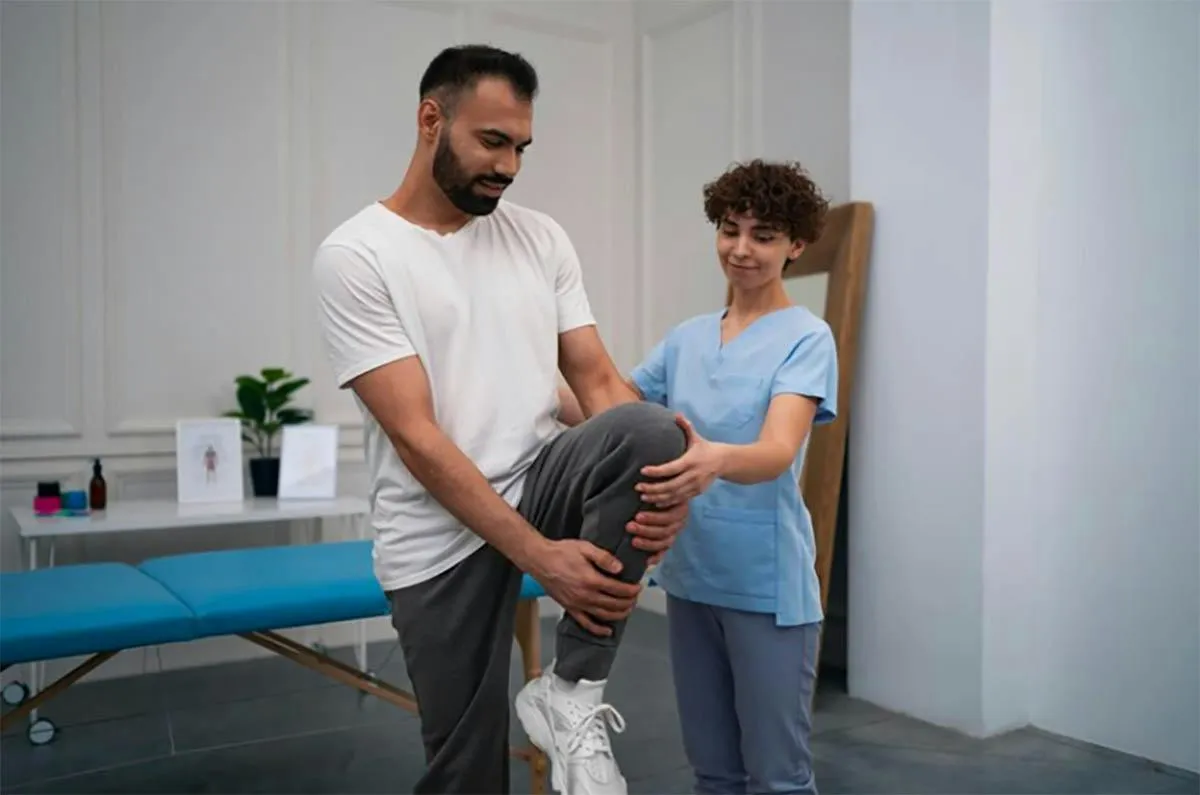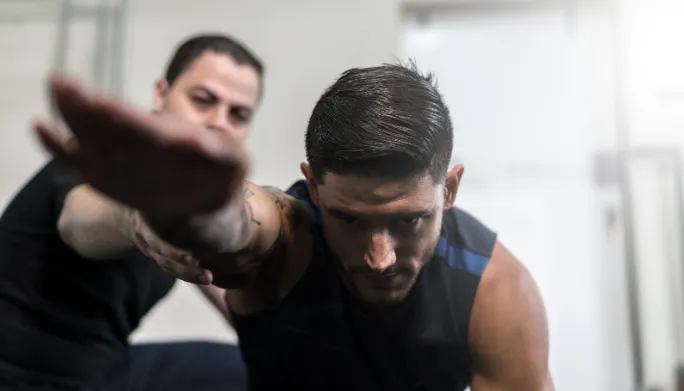Introduction
Sports physical therapy is a crucial aspect of athletes’ well-being, playing a pivotal role in their overall performance and recovery. This article aims to provide a comprehensive guide to sports physical therapy, covering its significance, techniques, aids, and preventive measures for sports-related injuries.
Understanding Sports Physical Therapy
Sports physical therapy, guided by athletic trainers, employs specialized techniques to prevent, manage, and rehabilitate injuries from sports and physical activities. Focused on enhancing performance, reducing pain, and promoting overall fitness, understanding these principles is fundamental for athletes and fitness enthusiasts. Incorporating a tailored exercise program further complements the comprehensive approach of sports physical therapy.
The Role of Physical Therapy Aids

In sports physical therapy, the guidance of medical professionals and physical therapists is crucial for utilizing a wide range of personalized aids and advanced physical therapy equipment in athlete recovery. These tools are customized to individual needs, enhancing the overall effectiveness of the rehabilitation process in this ever-evolving field.
Expediting the Recovery Process
Physical therapy aids, including braces and supports, are vital in accelerating recovery after a sports injury. These aids and specialized massage therapy provide targeted assistance, alleviate pain, and promote proper alignment.
Tailored to Individual Needs
Tailored for the injured athlete, physical therapy aids, like knee braces for runners or support sleeves for tennis players, address specific challenges related to their sport and injury type, minimizing recovery time.
Preventing Further Injuries
In preventing future injuries, physical therapy aids, along with personalized physical therapy exercises, provide targeted support, reducing the risk of re-injury and boosting athlete confidence in resuming activities.
Common Sports Injuries and Recovery Process
In sports, injuries inherently carry risks for athletes engaging in various athletic activities. Comprehending these common types and their recovery processes is vital for effective rehabilitation, ensuring not only recovery but also targeted pain relief.
Now, let’s explore specific categories athletes may encounter in their pursuits:
Strains: Muscles or tendons stretched beyond capacity due to overexertion, inadequate warm-up, or sudden forceful movements result in pain, swelling, muscle spasms, and limited range of motion.
Sprains: As a result of overstretching, sprains cause ligament injuries triggered by sudden twists or impacts. Symptoms include swelling, bruising, pain, and difficulty using the affected joint.
Fractures: Fractures, breaks, or cracks from force may be simple or compound. Symptoms include pain, swelling, deformity, and sometimes an audible crack.
Dislocations: Due to trauma, joint dislocations show visible deformity, intense pain, swelling, and immobility.
Techniques in Sport Rehab Physical Therapy

Engaging in an active recovery workout entails doing low-intensity exercises after a rigorous workout. This practice aids in muscle recovery and rebuilding after intense physical activity.
Let’s explore treatment options and specific methodologies employed in sports rehab physical therapy that contribute uniquely to the comprehensive recovery process.
Manual Therapy Techniques
One core component of sports physical therapy is manual therapy. Skilled therapists use hands-on techniques to manipulate muscles, joints, and tissues, providing relief from chronic pain while improving flexibility and range of motion.
Therapeutic Exercises and Recovery
Therapeutic exercises are tailored to individual needs and injury types. These exercises aid in rebuilding strength, enhancing flexibility, and promoting overall wellness. Understanding the specific exercises and their role in the recovery process is vital for athletes undergoing rehabilitation.
Personalized Therapy Plans
No two injuries are alike, and personalized therapy plans acknowledge this diversity. This section explores the importance of customized rehabilitation plans, highlighting how tailoring therapy to individual needs can significantly impact recovery.
Advanced Technologies in Sports Therapy
From virtual reality to wearable devices, advanced technologies are integrated to monitor progress and enhance therapy outcomes. Exploring these technological advancements provides insights into the evolving landscape of sports therapy.
Preventing Future Injuries
Physical therapists play a pivotal role in enhancing athletic performance by employing personalized aids for athlete recovery. These tailored tools contribute to the overall effectiveness of the rehabilitation process, ensuring athletes can reach and maintain peak performance levels.
Proper Warm-ups and Dynamic Stretching: Emphasize thorough warm-up routines with dynamic stretches tailored to the specific sport.
Focus on Strength and Conditioning: Implement targeted strength training and conditioning drills to enhance physical resilience.
Ensure Proper Technique: Stress the importance of correct form and technique during training and sports activities.
Incorporate Rest and Recovery: Highlight the significance of adequate rest, recovery periods, and healthy lifestyle habits.
Utilize Protective Gear: Recommend and educate athletes on using appropriate protective gear for injury prevention.
Conclusion
In summary, sports physical therapy is proactive, enhancing performance, hastening recovery, and ensuring lasting health. It’s a game-changer beyond injury management for an overall improved athletic experience.
Ready for transformation? Schedule your sports physical therapy session today and explore the benefits of sports performance training. Elevate your game and well-being now!
Experience the difference with Change the Game Performance Therapy. Schedule your session today and redefine your athletic potential.
FAQs
Q1: What is Sport Physical Therapy?
A1: Sport rehab physical therapy is a specialized branch of physical therapy focusing on preventing, managing, and rehabilitating injuries related to sports and physical activities. It aims to enhance performance, reduce pain, and promote overall fitness. Optimal recovery brings multiple advantages during consistent high-level training and competition.
Q2: Can sports physical therapy prevent future injuries?
A2: Yes, sports physical therapy plays a crucial role in preventing future injuries. Through targeted exercises, personalized plans, and preventive strategies, athletes can minimize the risk of injuries during physical activities.
Over the past 5-10 years, there has been a notable surge in research investigating the impact of recovery on performance and exploring potential mechanisms.
Q3: Are there any risks associated with sports physical therapy?
A3: While sports physical therapy is generally safe, some risks, such as temporary soreness or discomfort, may arise during sports injury recovery. Open communication with the therapist and adherence to their guidance are essential for mitigating these potential risks.


